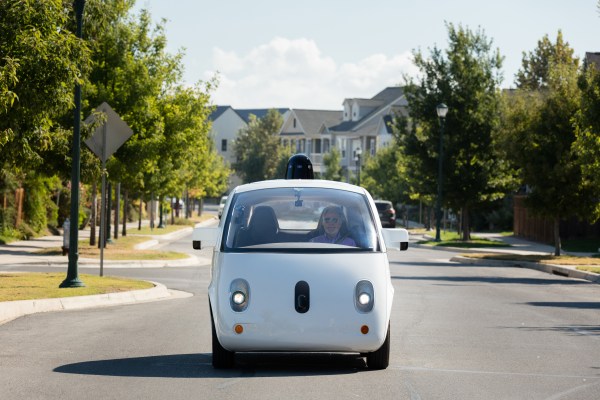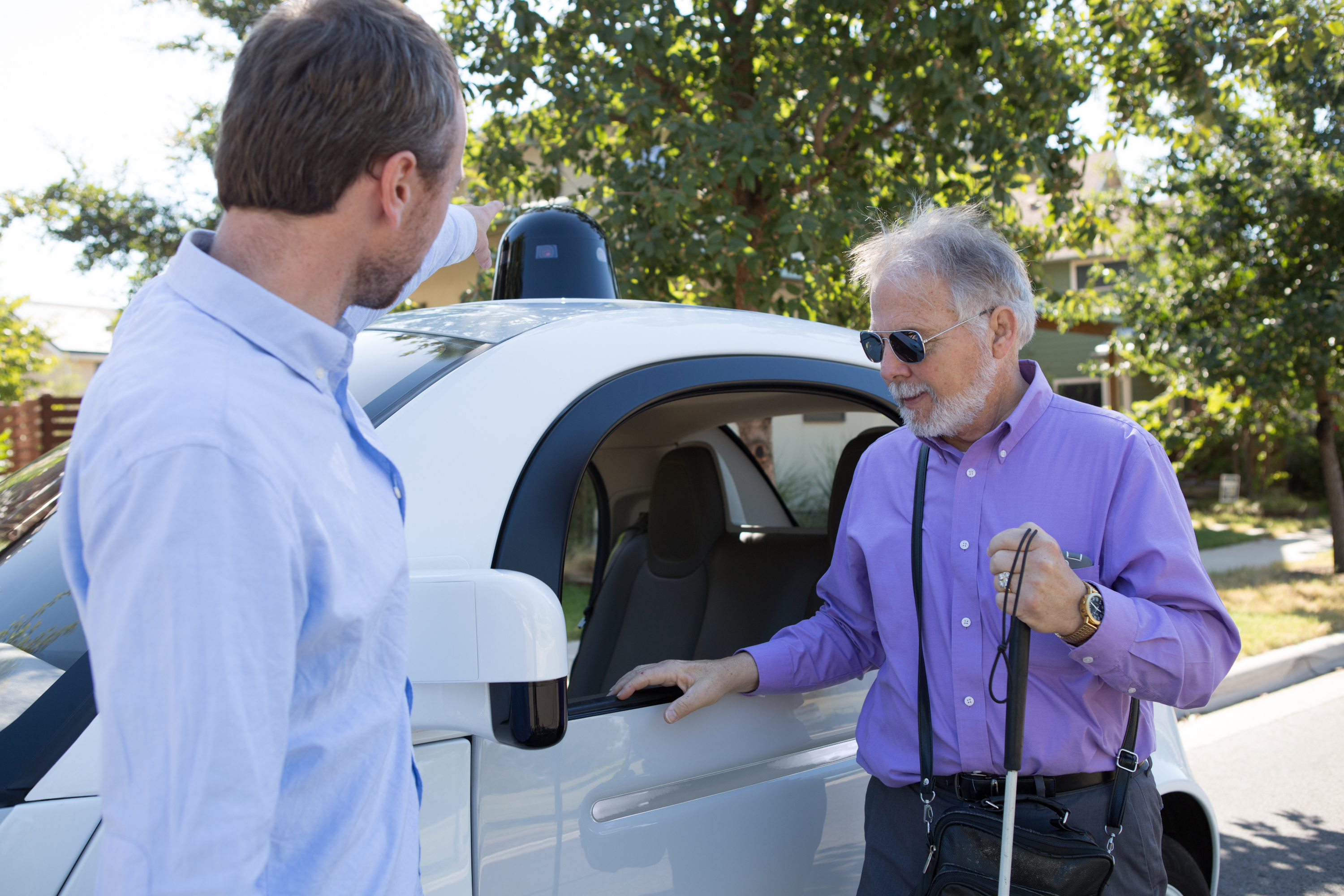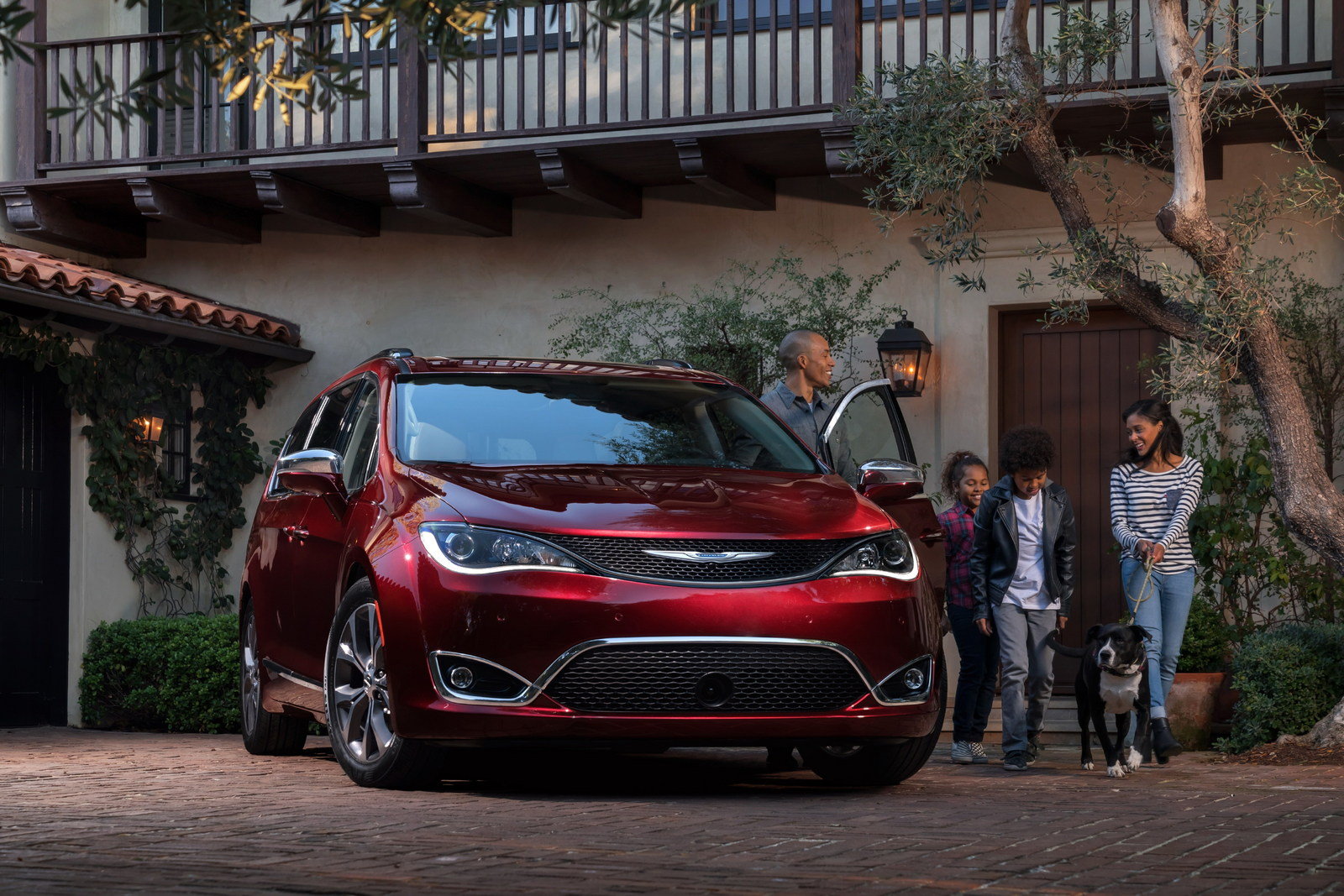Google is setting up its self-driving car unit as its own separate entity called Waymo under the Alphabet umbrella, the company announced today. The name is derived from its mission of finding “a new way forward in mobility.”
“We’re now an independent company within the Alphabet umbrella,” Waymo CEO John Krafcik told an audience at a press event in San Francisco today. Krafcik also noted that the Waymo team conducted the first fully driverless ride on public roads in Austin last year, using a car with no steering wheels and no pedals in “everyday traffic” on city streets.
This historic first, fully driverless ride on public roads put Steve Mahan, a legally blind friend of Waymo principal engineer Nathaniel Fairfield, in the self-driving car solo. Mahan had ridden in Google test vehicles previously, but he was always accompanied and escorted by police. This time, he rode with neither, and the car negotiated four-way stops, pedestrians, narrow streets and more in public in Austin.
At the press event, Mahan compared the experience to being some kind of terrestrial astronaut, and called himself “rider 1.”
Recent changes to Google’s self-driving business unit include the appointment of ex-Hyundai North America executive Krafcik as the project’s CEO. That move, along with the addition of ex-Airbnb and TripAdvisor exec Shaun Stewart later this year, indicated the self-driving car unit was gunning for more than breakthroughs in research and technology now, and positioned to evolve into a commercially viable company.
“We’ve talked a lot about the two million miles we’ve driven on public roads,” Krafcik said at the event. “Now we’ve driven another million miles on public roads. We don’t talk as much about miles we put on in simulation. We’ve done over one billion miles in simuliatio[…] And we have taken over 10,000 trips with Googlers and guests in places like Mountain View, Austin and Phoenix.”
Google X, and now Waymo, accomplished a lot in all that time spent driving and testing. Still, Waymo’s head of self-driving tech Dmitri Dolgov says that there’s a lot to work on, including building out better maps, making rides smoother overall, and improving navigation in inclement weather like heavy rain and snow.
As for where the business is headed under the new Waymo brand, Krafcik spoke of a range of potential opportunities.
“We can imagine this [technology] in ridesharing, in transportation, trucking, logistics even personal use vehicles and licensing with automakers, public transport and solving the last mile” he said. “Self driving technology is awesome in all these categories.”
Krafcik also emphasized that the new company is focused on technology, not necessarily making cars. This fits with reports that the business will be looking to partner more with vehicle makers, rather than building its own.
“We are a self driving technology company,” he said pointedly. “We’ve been really clear that we’re not a car company although there’s been some confusion on that point. We’re not in the business of making better cars. We’re in the business of making better drivers.”
Krafcik said that Waymo is currently in the “build phase” of putting next generation sensor load outs in the Chrysler Pacifica. Earlier this year it announced a 100-car pilot project in partnership with Fiat Chrysler. They’re currently readying these vehicles for road tests, he said.
Uber is also working with carmakers in deploying its own self-driving vehicles for its ride-hailing service, including Ford and Volvo. Other automakers, like Volkswagen and GM, have opted to build or acquire their own self-driving tech and on-demand mobility service offerings.
Bloomberg reported Tuesday that Alphabet’s newly independent autonomous car company will team up with Chrysler for a ride-sharing service deployment, which would see semi-self-driving Pacifica vans hit the roads to carry passengers as early as the end of 2017.
As mentioned, Google previously announced a plan to build 100 prototype autonomous vehicles based on the Pacifica platform in partnership with Fiat Chrysler, but this new plan will involve a much broader scope and higher vehicle requirement. Fiat also plans to unveil an all-electric Pacifica at this year’s upcoming CES show in Las Vegas, and that could be a key ingredient in its tie-up with Google, since EV fleets are much more practical option for the future of autonomous on-demand services.
As an independent company under the Alphabet umbrella, Waymo will likely be less insulated from scrutiny regarding its progress and performance as a business, so its next steps in terms of partnership and sales or licensing model will be very interesting to watch.



